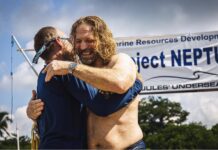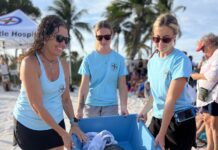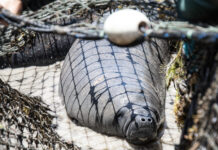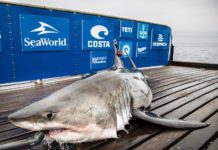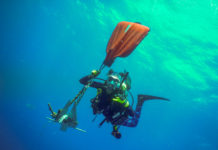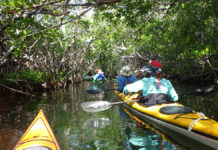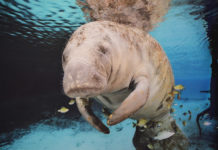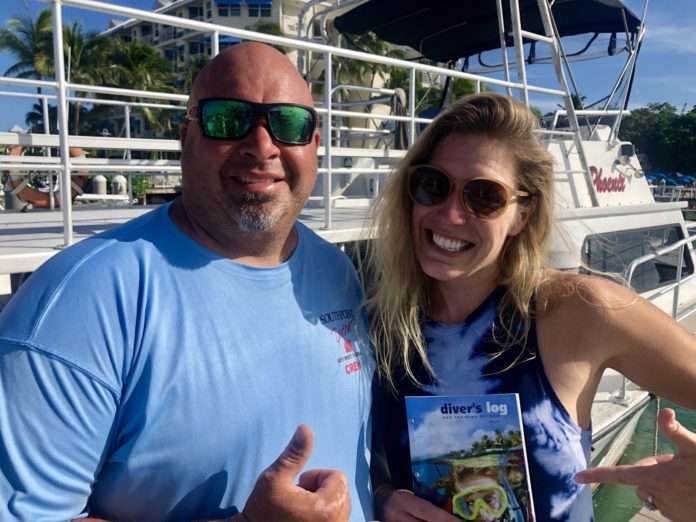
My dive instructor, John Brazau, certainly has a way with words. Presenting my dive certification, he said, “That’s your idiot card.” My understanding is that the dive certification course teaches you how not to be an idiot underwater, but it doesn’t actually prevent you from underwater idiocy.
“It’s like a diver’s license,” John said. You can follow all the rules, and use your turn signals, and drive the speed limit in the text, but if you go out there and don’t drive safely, the license means nothing. “That’s the best illustration I can offer.”
Truly, that made quite the impression on me. He and other members of the Southpoint Divers team told stories of divers panicking and shooting to the surface while exploring the Vandenberg (hint: you definitely don’t want to rocket up 100 feet without a safety stop … ever heard of “the bends?”), of divers jumping off boats unwisely and banging their air tanks on the side, of people diving drunk or hung over — a lot of the same type of stupid mistakes drivers make that put themselves and others in harm’s way.
I assured him that I would leave my idiocy on land, and on foot.
The last day of dives was an exciting one (SPOILER ALERT: Sharks!). I learned a lot, and Brazau and other crew members on the Phoenix had funny, memorable ways to cement these lessons in memory. One of my favorites were their creative devices for remembering the elements of the safety check: B (Buoyancy Control Device), W (Weights), R (Releases, or straps to undo to get your equipment off), A (Air!), F (Final check). But it’s a lot easier to remember if you think, say “Bruce Willis Ruins All Films” or “Be Wasted Regularly After 5 p.m.” It certainly worked for me!
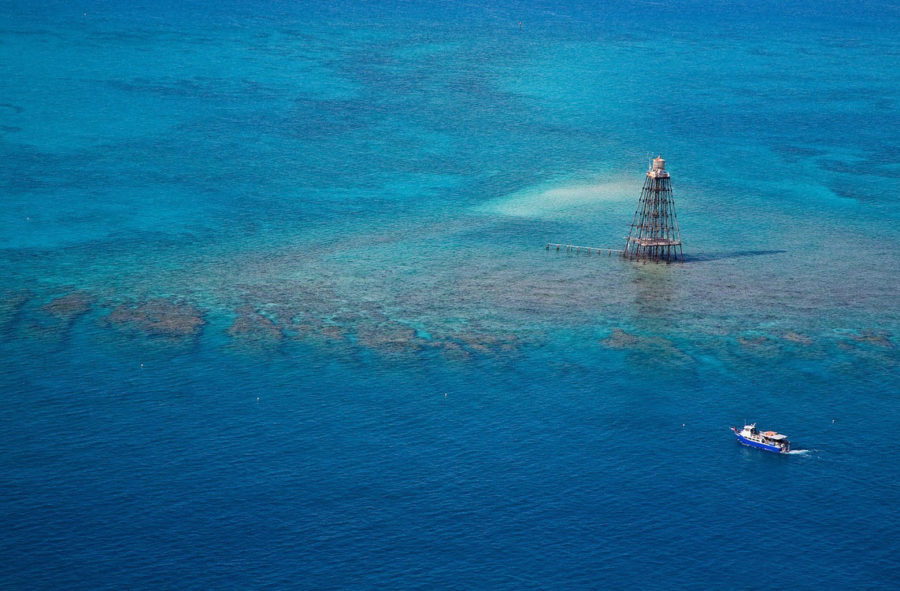
We hit Sand Key Light and XXXXXXXXX on Friday. The water was smooth and the visibility was at least 30 feet. This time, I had to put my kit together as John watched, noting if I had forgotten anything (Weights! Don’t forget your damn weights.) and double checking my adjustments. Lisa, who was part of our dive group, was also on the last day of her certification, so we were doing similar skills: a slow ascent after “running out of air” (I thought John was going to actually turn off the air from my tank, but fortunately it’s just a drill), and using a compass to navigate underwater.
As a veteran of the Air Force and an Eagle Scout, John knows his way around directional devices. I, however, have never used a compass. Fortunately, for our purposes, it was pretty straightforward — straight being the key word. Holding the compass straight and level was half the battle. I found that it was relatively easy to follow the directional instructions, if you just watch where you’re going and follow the compass number. It followed the trend of a lot of the devices I’ve been introduced to: the depth and air gauges and dive computer are pretty user-friendly once you get over the initial panic of MATH.
The challenges that John says will be ongoing are establishing neutral buoyancy and clearing my ears. “It’s a muscle like anything else,” John said of the Eustachian tubes. “You’ve just got to train them to do what you want.” My ears already felt more comfortable this time than they did the first dive. The rest of me did too, and I didn’t even panic when we saw a pair of sharks. Okay, they weren’t big scary Jaws-style sharks, but sharks nonetheless. While at Sand Key, we had a 3- to 4-foot reef shark (pointy nose) swim by, followed by a good sized, 5- to 6-foot nurse shark. They cruised by, looked our way, and were more interested in a school of fish. Seeing the graceful, sleek creatures in their natural element was stunning.
We also should count ourselves lucky! That was dive three for Lisa and me, while John said it took him 50 dives to encounter a shark.
I still have a lot to learn, for sure, and like most things, I’m assured that ease and neutral buoyancy come with time. But if it tells you anything about my enthusiasm or experience, know that I’ve already got a reef dive booked this weekend and a Vandenberg dive on the horizon for the following one!
My two cents of advice as an amateur diver?
- Be sober, not hung over, hydrated, and relaxed setting out. You’re in the hands of professionals — there’s really nothing to stress about.
- Breathe slowly and deeply. It will help you maintain neutral buoyancy AND prevent any panic.
- Eat light. The difference between a sick stomach and an okay stomach was the difference between a heavy lunch vs. a Kind bar.
- Look around instead of being hyper-focused on “am I messing up?” Observe the beauty surrounding you — that’s the fun part.
The amazing staff at Southpoint Divers made it easy on me, and I’m super excited to get to see the Keys world under the surface.












